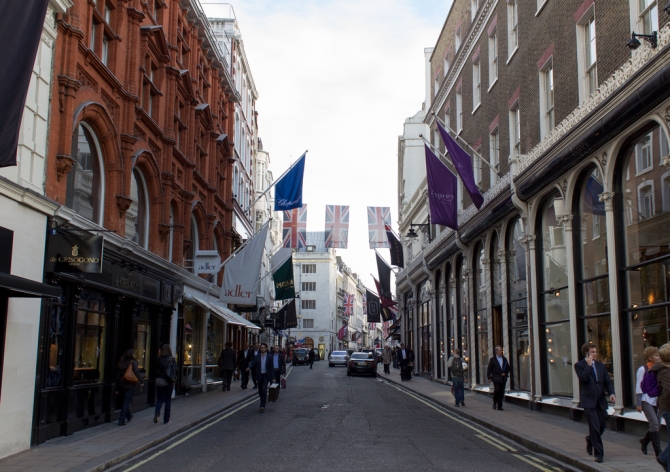While in many areas of the country the recovery of the retail market remains slow, it seems there has been a boom in demand in the capital, with recent research from property consultancy Knight Frank revealing several major streets in Central London have “virtually no availability.”

The property firm surveyed 18 key London locations in order to determine whether the capital’s supply will be able to meet the demands of retailers in the coming years. It found that vacancy rates now average lower than in the years before the recession struck, with an average level of 3 to 4 per cent in these areas meaning any available retail units are snapped up by companies keen to retain or acquire a foothold in the profitable London market.
In addition, during the past five years landlords have taken advantage of the high demand for London retail space, with rents in prime locations such as Bond Street having risen by 45 per cent. This has seen the city experience a number of ground breaking deals, including watchmaker Patek Philippe’s acquisition of a 1,200 sq ft store for a mammoth £10 million earlier this year.
Retail research team member and partner at Knight Frank, Darren Yates, believes this demand is only set to grow.
He says; “London’s retail market continues to go from strength to strength, with a long line of retailers and restaurants seeking space and rents still under pressure in both prime and off-prime locations.”
Fortunately, while prime areas may be bursting at the seams and pricing out smaller retailers, there remain a number of opportunities to pick up retail units in London for a slightly more reasonable price. Rents for the past five years on Edgware Road have risen at less than half the rate of nearby Bond Street, while Piccadilly remains comparatively under-rented and therefore offers strong growth prospects for those keen to locate to a fashionable yet low key area of London.
Part of London’s appeal for international retailers lies in the city’s growing popularity as a tourism destination, with statistics showing that a total of 16.8 million international visitors travelled to London in 2013. While this primarily benefited businesses in the hospitality and leisure industries, the retail industry certainly enjoyed its piece of the pie – Asian, Latin American and Middle Eastern tourists were shown to have spent the most during their stay, indicating that London’s status as an international retailing mecca was a major draw for those wishing to visit the UK.
Yet without a strong supply of commercial property in the pipeline, London could soon see its levels of growth jeopardised as firms are forced to seek elsewhere when expanding. It is vital, therefore, that a solution to the supply and demand issue is found in order for London, and the UK economy, to continue to build in momentum.
Previous Post
Pubs hope for Brazil Bonanza as World Cup Fever mounts